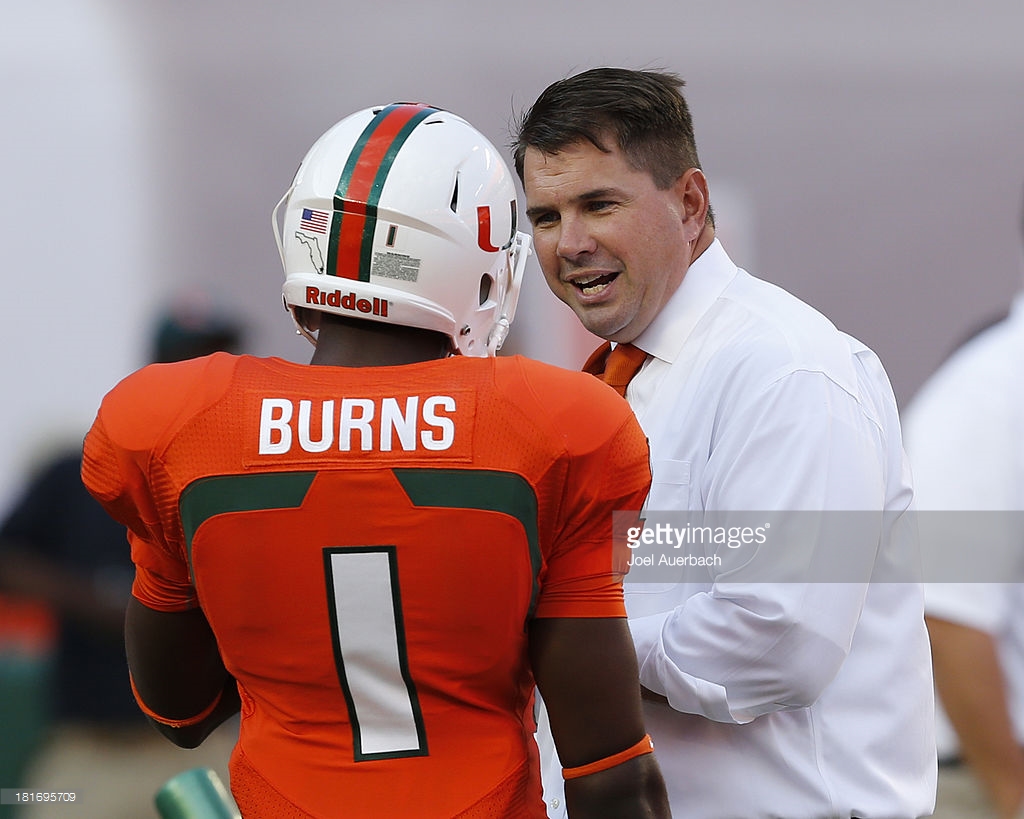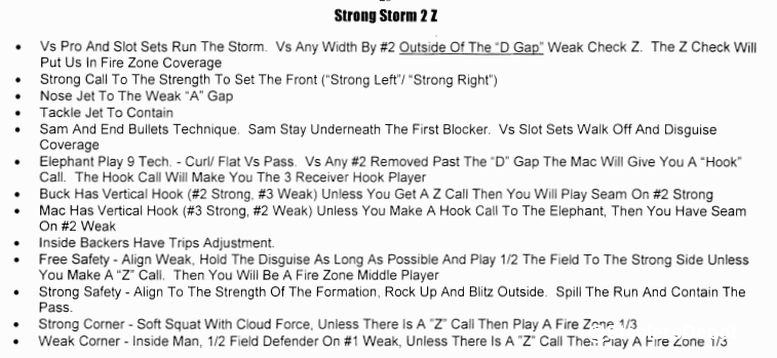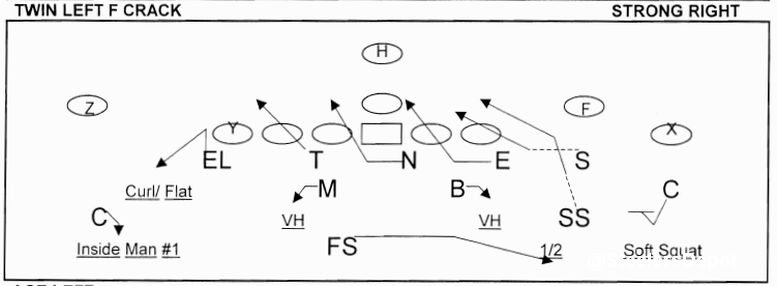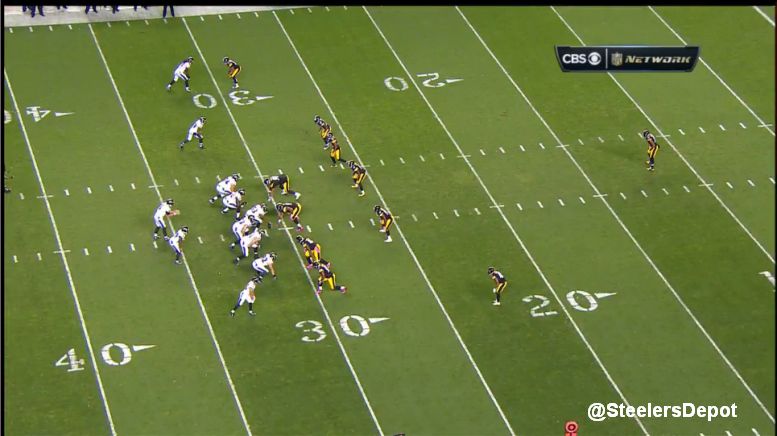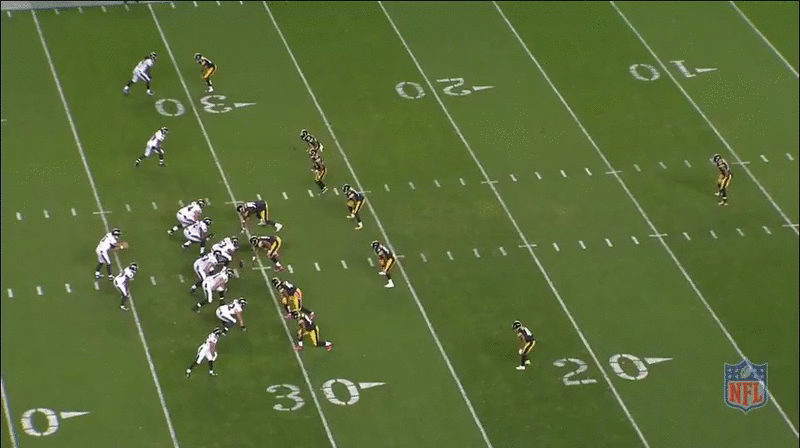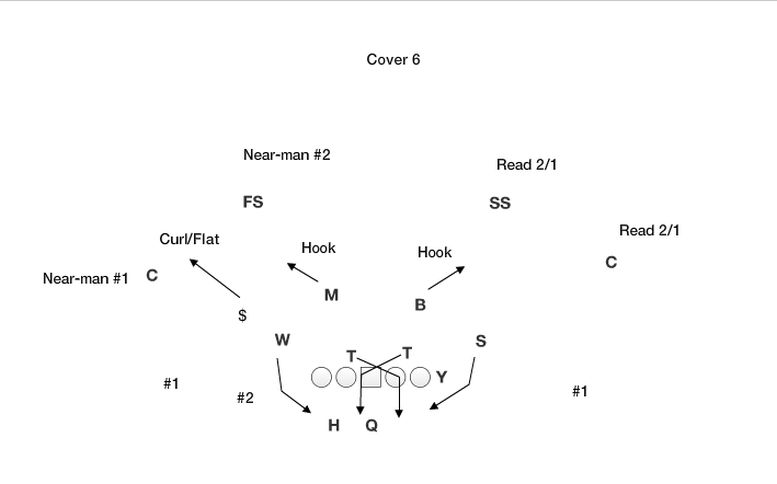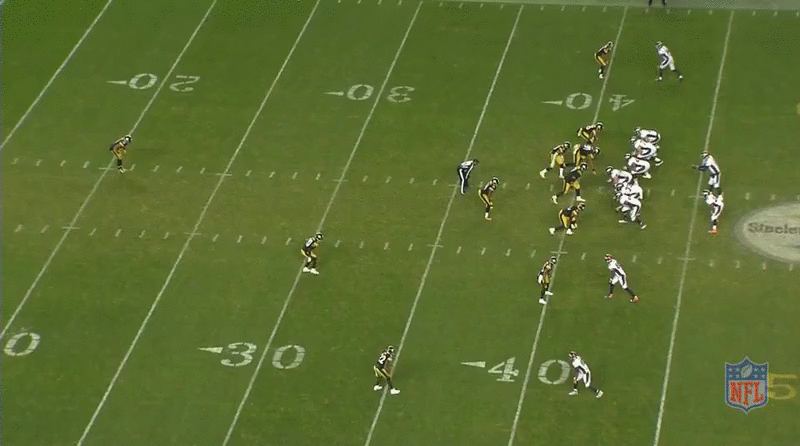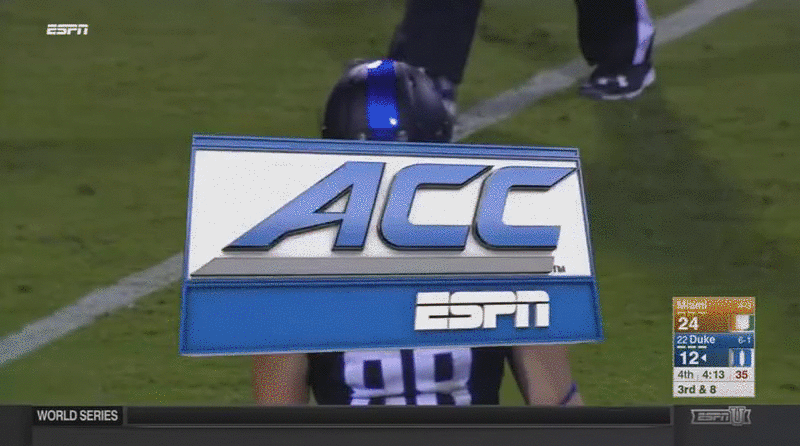Earlier, we covered some of the press man principles we’re seeing more out of the Pittsburgh Steelers’ defense. And how Artie Burns’ length comes at a major advantage, allowing the team do more of that – and more effectively – with him on the field.
But he’s also a playmaker with plus ball skills. Six interceptions last year speaks to that, especially for a young guy starting in his second season. The Steelers targeted playmakers last draft and that trend has held up through this s draft class.
How can Burns’ skillset mesh with the Steelers’ scheme? His ability to process information quickly and strong lower half to explode out and drive downhill. That works perfectly for some of the Steelers’ trap coverages.
Quick review on trap schemes. In a general sense, you’ll hear me refer to this as 2 Trap, 2 Read, or Palms coverages. They’re pattern reading where the outside cornerback is reading 2 to 1, driving on the #2 receiver if he runs an out-breaking route. If the QB fails to pick up the coverage, he runs the risk of throwing the ball right into the quarterback’s hands. For the defense, that’s the intention.
Keith Butler sprinkled this into his defense last year, and has leaned on it as his go-to plays in crucial spots. Let’s take a look.
In October’s loss to the Baltimore Ravens, Butler busted out a fire zone: Strong Storm 2 Z. I broke it all down here, but here is the example of it from Dick LeBeau’s 2002 Cincinnati Bengals playbook.
Aerial look of the pre-snap look.
This looks like Cover 1. But post-snap, as Pittsburgh rolls into their Fire Zone, it becomes something very different. Ross Cockrell winds up jumping the #2 receiver on the out, stepping in front of the pass for a long return. Joe Flacco never saw him and paid the price. Gorgeous.
But this call was just as effective at other moments, even if it didn’t end in near pick sixes. I always think about the end of the Denver Broncos‘ game, the first matchup, and how Butler put the game on the same coverage for four consecutive plays. Cover 6. Think of Cover 6 as a mix between quarters and Cover 2. One cornerback is going to squat into the flat while the others in the secondary drop and carry vertical concepts.
Again, the corner is going to get eyes on #2 and drive if he runs an out. Unless both #1 and #2 run vertical, the corner is going to sit in the flat. This allows him to read the QB, the route, and break on anything underneath.
Butler ran this four straight times on the final defensive stand against the Broncos. I’ll show just one example of it here but you can click this link for the original article where I show all for. Watch Cockrell at the top here, driving on #2 (the tight end), as he runs an out route.
So where does Burns fit in all of this? He’s a guy with plus ball skills and I like his ability to read coverage and break on the football. Check out this clip against Duke. 4th quarter, late in the game, Hurricanes with the lead.
I don’t know if this is the same scheme/coverage but for Burns, it’s the same idea. Playing the flat and jumping #2 as he runs into the flat. Burns reads it, breaks with authority, and runs through the ball, creating an incompletion.
Yeah, he took a risk going for the ball and not the tackle, but you have to take those calculated risks. Gotta buy a ticket to win the lottery. Knowing how young he is, how relatively inexperienced he is – three years playing, two years starting – his mental game is pretty advanced. When you get a guy who can definitely make plays on the football, you have something to get excited about.
Of course, what we’re seeing is partly in credit to the scheme. That is the driving force behind some of these plays – bait the QB, capitalize on the mistake. But defenses are at their best when they marry talent that fits into a scheme. And in this respect, Burns can thrive.

